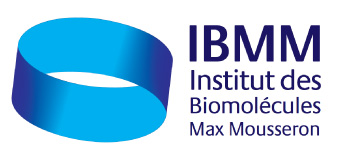Glyco-amphiphilicity: a property with applications from bio-based chemistry to biology
Séminaire Chimie ED459
Dr. Yves
Le Jeudi 18 Avril 2019 à 14h
ENSCM, Amphithéâtre Godechot (campus Balard, 240 av. Émile-Jeanbrau)
Date de début : 2019-04-18 14:00:00
Date de fin : 2019-04-18 15:30:00
Lieu : ENSCM amphi Godechot (campus Balard, 240 av E. Jeanbrau)
Intervenant : Dr. Yves
ICBMS Institut de Chimie et Biochimie Moléculaires et Supramoléculaires, UMR 5246, CNRS, Université Claude-Bernard Lyon 1
Glycoamphiphilicity is the property common to biological glycolipids and synthetic carbohydrate-based surfactants. It is associated with their biological roles and functions, and industrial applications, respectively. While glycolipids are components of the biological membrane where key biological processes take place and are essential to life, surfactants are commodity chemicals used in a wide range of situations of the everyday life, requiring constant progress in terms of sustainability and performance. However, they share in common the way their physicochemical properties are dictated, on one hand, by non-covalent interactions between their highly hydroxylated polar moieties, and, on the other hand, with low-energy interactions between their hydrophobic contents. This results is a fascinating subtlety in the relations between structure and properties.[1,2]
The topic will be illustrated by our studies on carbohydrates-based surfactants and emulsifiers, including their liquid crystalline behaviour,[3-7] and by investigations on the amphiphilic character of acyl steroid glycosides (ASGs).[8] A focus will be made on α-CAG (6-O-tetradecanoyl cholesteryl α-D-glucopyranoside), an acyl steroid glucoside found in the membrane of pathogenic bacteria Helicobacter pylori, in which the chain length appears a key parameter for the induction of lipidic redistribution and domain formation within model membrane Langmuir monolayers.
Overall these examples show how much glycoamphiphilicity is a peculiar and important property with relevance to both the green and biological sides of glycosciences.
References
1. Y. Queneau, R. Xu, In: Y. Queneau, A.P. Rauter, T. Lindhorst (Eds), Carbohydrate Chemistry, Chemical and Biological Approaches, Specialist Periodical Reports, vol. 40, RSC, Cambridge, 2014, 31–47.
2. L. Wang, Y. Queneau, Carbohydrate-based amphiphiles: a resource for biobased surfactants, In: R.A. Meyers (Ed), Encyclopedia of Sustainability Science and Technology, Springer, 2018. DOI: 10.1007/978-1-4939-2493-6_1009-1
3. Y. Queneau, S. Chambert, C. Besset, R. Cheaib, Carbohydr. Res. 2008, 343, 1999–2009.
4. R. Xu, F. Alirachedi, S. Chambert, F. Ferkous, Y. Queneau, S.J. Cowling, E.J. Davis, J.W. Goodby, Org. Biomol. Chem. 2015, 13, 783–792.
5. M.K. Singh, R. Xu, S. Moebs, A. Kumar, Y. Queneau, S.J. Cowling, J. W. Goodby, Chem. Eur. J. 2013, 19, 5041–5049.
6. C. Epoune Lingome, B. Gadenne, C. Alfos, Y. Queneau, S. Moebs-Sanchez, Eur. J. Lipid Sci. Technol. 2017, 118, 1600413.
7. A. Boyer, C. Epoune Lingome, O. Condassamy, M. Schappacher, S. Moebs-Sanchez, Y. Queneau, B. Gadenne, C. Alfos, H. Cramail, Polymer. Chem. 2013, 4, 296–306.
8. Z. Yang, R. Xu, F. Ali-Rachedi, N.M. Xavier, S. Chambert, L. Soulère, M. Ahmar, G. Mackenzie, E.J. Davis, J. W. Goodby, S.J. Cowling, Y. Queneau, Liq. Cryst. 2017, 44, 2089–2107.
Contact local IBMM : Dr. Thierry
